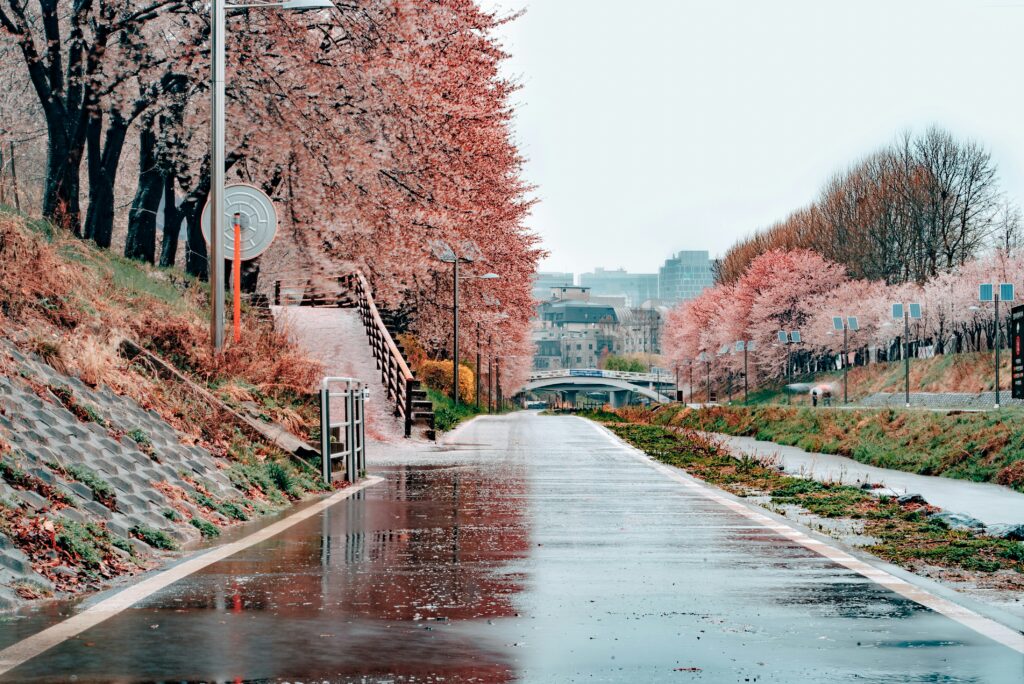Japan isn’t just one of the most beautiful countries in the world — it’s one of the most seasonally dynamic places too. From the pink showers of cherry blossoms in spring, to the vibrant festivals of summer, the golden leaves of autumn, and the magical snowfall of winter, every season brings something unique to the table.
Whether you’re planning your first trip or your fifth, this guide will help you choose the best time to visit Japan based on your interests — or inspire you to come back multiple times to experience them all!
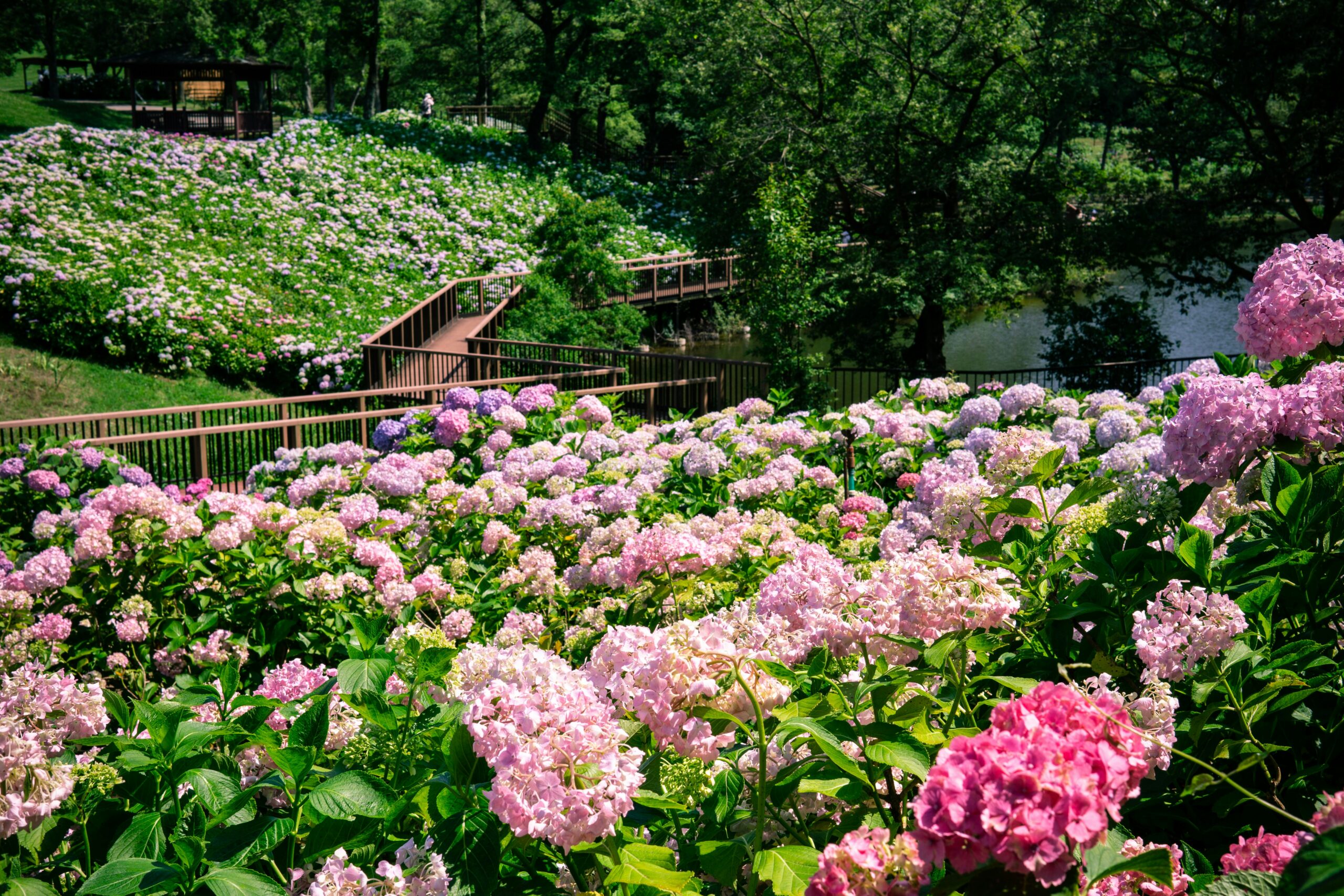
🌸 Spring in Japan (March – May)
If there’s one season that people around the world associate with Japan, it’s spring. And for good reason — it’s honestly the most magical time of year to visit. The entire country feels like it’s waking up after winter: parks start to fill with people again, the air is crisp but warming, and nature puts on an unbelievable show with cherry blossoms, fresh greenery, and vibrant festivals.
But here’s the thing — spring in Japan is so much more than just sakura. Yes, the cherry blossoms are stunning (and we’ll absolutely talk about them), but this season also comes with rich cultural traditions, exciting street food, and an atmosphere that’s hard to describe unless you’ve actually experienced it. It’s like a wave of hope and energy washes over the entire country.
🌸 Hanami (Cherry Blossom Viewing)
Let’s start with the big one: sakura.
In late March to early April (depending on where you are in the country), cherry blossoms bloom like crazy — transforming parks, riversides, temples, and even regular neighbourhood streets into living postcards. Cities like Tokyo, Kyoto, Osaka, and Hiroshima all have famous spots where thousands of trees bloom at once.
But here’s what really makes it special: the hanami (flower viewing) tradition. Families, couples, friends, co-workers — everyone heads out to the parks with food, drinks, and picnic mats to enjoy the view. It’s not just about looking at the flowers — it’s about celebrating life, nature, and the short-lived beauty of the season. There’s music, laughter, tons of convenience store snacks and beer, and a real feeling of community. You’ll feel like you’re part of something very Japanese… even if you’ve only just arrived.
Some top hanami spots include:
- Ueno Park and Shinjuku Gyoen in Tokyo
- Maruyama Park and Philosopher’s Path in Kyoto
- Hirosaki Castle Park in Aomori (cherry blossom AND a castle? Unreal)
- Mount Yoshino in Nara — this one’s legendary for sakura lovers
And trust me — nighttime hanami (yozakura) is just as beautiful, with many trees lit up for evening walks. Bring a jacket, a warm drink, and just vibe under the petals.
🎎 Spring Festivals & Local Culture
Spring is festival season too — and not just for cherry blossoms.
As the weather warms up, towns and cities all over Japan hold matsuri (festivals) full of colour, tradition, and amazing food stalls. Some iconic ones include:
- Takayama Spring Festival (Gifu) — known for its beautifully crafted parade floats
- Kanda Matsuri (Tokyo) — one of the biggest Shinto festivals, held in mid-May
- Hakata Dontaku Festival (Fukuoka) — attracts over 2 million visitors with parades and performances
It’s also the time when Japanese school and work life resets — April marks the start of the academic and fiscal year, so there’s a “fresh start” feeling across the country.
🧋 Seasonal Food & Flavours
Japanese cuisine changes with the seasons, and spring food is refreshingly light, colourful, and earthy.
Look out for:
- Sakura-themed everything – mochi, lattes, KitKats, even sakura beer
- Takenoko (bamboo shoots) – used in soups, rice dishes, and tempura
- Strawberries (ichigo) – this is peak strawberry season; cafés go wild with strawberry parfaits and cakes
- Haru yasai (spring vegetables) – like nanohana (rapeseed blossoms) and fresh sansai (mountain vegetables)
And of course, if you’re doing hanami, grab a bento box from a department store or konbini and enjoy it under the blossoms like a true local.
🌱 Why Spring Feels So Special
Honestly? Spring in Japan has this calm energy to it. It’s not as humid as summer, not as cold as winter, and there’s this sense of renewal everywhere you go. You’ll see people starting new routines, jogging in parks, couples going on scenic strolls, and photographers chasing the perfect sakura shot.
If it’s your first time in Japan, spring will spoil you. The colours, the atmosphere, the traditions — it feels like Japan is rolling out a soft pink carpet just for you.
🌸 Spring Highlights:
- Cherry Blossom Season (Late March to Early April): Best viewed in places like Ueno Park (Tokyo), Maruyama Park (Kyoto), Hirosaki Castle (Aomori) and Mount Yoshino (Nara). It’s more than just sightseeing — hanami (flower viewing) is a core cultural experience.
- Mild Weather: Days are cool and comfortable — perfect for walking around cities and doing outdoor sightseeing without breaking a sweat.
- Festivals: Spring kicks off with events like the Takayama Spring Festival, Kanda Matsuri (in May), and regional sakura festivals.
- Golden Week (Late April–Early May): A series of national holidays when most of Japan takes time off — amazing energy, but very crowded.
Personal Take:
If you’re someone who loves peaceful walks, Japanese gardens, scenic photography, and just vibing with nature, spring is probably your perfect match. Just book things early — spring is when tourism explodes in Japan!
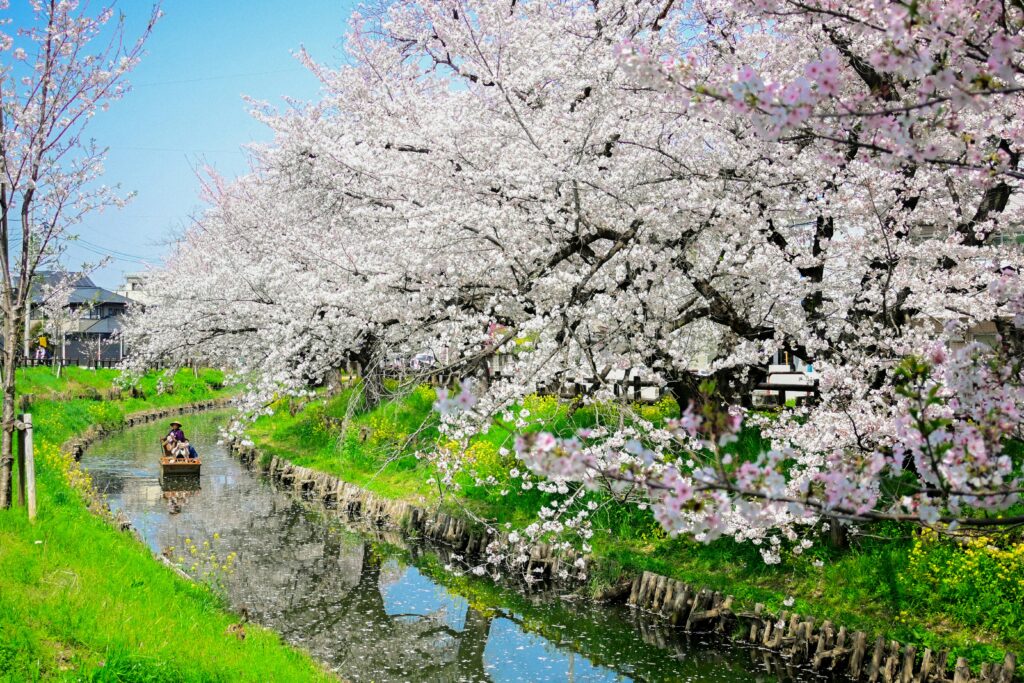
☀️ Summer in Japan (June – August)
Ahh, summer in Japan. It’s hot, it’s humid, it’ll have you sweating buckets… but it’s also absolutely electric in terms of energy, atmosphere, and cultural richness. If you’re someone who thrives on high vibes, festivals, fireworks, and food stalls — summer might be your dream season.
That said, it’s not for the faint of heart. The weather can be brutally humid, especially in July and August, and June tends to be the rainy season (tsuyu). But if you can power through that, you’ll be rewarded with some of Japan’s liveliest and most iconic experiences.
Personally, while I’m not the biggest fan of sticky weather, there’s something about the summer vibe in Japan that still makes it kind of magical — maybe it’s the fireworks, maybe it’s the late-night festival food stalls, or maybe it’s just the energy in the air…
🌡 Weather & Vibe
From late June to mid-September, Japan enters full summer mode. The rainy season (called tsuyu) kicks things off in June, bringing heavy showers and a lot of humidity, especially in places like Tokyo and Osaka. But once the skies clear up by mid-July, the heat intensifies, often climbing past 35°C in major cities.
It’s hot. It’s humid. It’s sweaty. But strangely, summer in Japan is also full of life. It’s the season of bon odori dancing, traditional festivals, and epic fireworks displays that light up the night skies. Locals swap jeans for yukata (light cotton kimonos) and gather in parks, riversides, and temples for seasonal celebrations.
🎆 Summer Festivals (Matsuri)
Japan goes all-out with summer matsuri, and attending one is something I’d say every visitor should do at least once. These festivals blend tradition, community, and excitement in a way that’s so uniquely Japanese.
Some iconic ones include:
- Gion Matsuri (Kyoto): One of Japan’s most famous festivals, featuring ornate floats, street parades, and ancient rituals that date back to the 9th century.
- Tenjin Matsuri (Osaka): Known for its processions of boats on the river, followed by massive firework displays.
- Sumida River Fireworks Festival (Tokyo): If you’re in Tokyo during late July, this is a must-see. The fireworks are unreal and pull crowds in the hundreds of thousands.
At these events, you’ll be surrounded by yukata-clad locals, colourful lanterns, and the smell of festival foods like yakisoba, takoyaki, kakigori (shaved ice), and taiyaki (fish-shaped red bean cakes).
🏖 Coastal Escapes & Summer Getaways
If you’re like me and can’t stand sweating it out in the city, you’ll probably want to escape to the coast or the mountains. Luckily, Japan has no shortage of beautiful beaches and cooler summer destinations.
- Okinawa: This tropical paradise feels like Japan’s version of Hawaii. Crystal-clear waters, white sand beaches, and a chilled island vibe — it’s a world away from the buzz of Tokyo.
- Kamakura & Enoshima: Just a short trip from Tokyo, these coastal towns offer temples, surfing, and some decent beaches.
- Mount Fuji & the Fuji Five Lakes: Cooler air, amazing hiking, and panoramic views. Climbing season for Mt. Fuji is in July and August if you’re feeling adventurous (I’ll pass for now 😅).
- Karuizawa: A popular summer escape in the mountains, perfect for nature walks, cycling, and shopping in trendy outlets — all while staying a few degrees cooler than the city.
🍧 Summer Food & Traditions
When it comes to seasonal food, summer in Japan doesn’t disappoint. You’ll see locals lining up for kakigori — that delicious shaved ice dessert topped with fruity syrups or condensed milk. It’s a lifesaver in the heat.
Other staples include:
- Hiyashi Chūka (Cold Ramen): A refreshing dish with noodles, cold broth, sliced egg, and cucumber.
- Unagi (Grilled Eel): Especially eaten on Doyo no Ushi no Hi, a midsummer tradition believed to boost stamina.
- Watermelon splitting (Suikawari): A fun beach tradition similar to a piñata, where blindfolded people try to crack open a watermelon with a stick. Don’t ask me why, but it’s a thing 😄.
Overall, summer in Japan is a season of extremes — extreme heat, extreme energy, and extreme memories. If you can handle a bit of sweat, it might just be the most electrifying time to visit.
🔥 Summer Highlights:
- Matsuri Season (Festival Frenzy): Summer is when Japan’s festival culture explodes. Some of the most famous include:
- Gion Matsuri (Kyoto): A legendary month-long event in July filled with floats, processions, and traditional music.
- Tenjin Matsuri (Osaka): A boat procession and fireworks show on the river — one of the top 3 festivals in Japan.
- Awa Odori (Tokushima): Massive traditional dance festival that’s all about movement, rhythm, and local spirit.
- Nebuta Matsuri (Aomori): Giant glowing warrior floats being paraded through the city — it’s intense and stunning.
- Fireworks (Hanabi Taikai): Japanese summer nights are famous for their huge firework displays. People dress in yukata, eat takoyaki and yakisoba, and chill with friends while fireworks light up the sky.
- Notable shows: Sumidagawa Fireworks Festival (Tokyo), Nagaoka Festival (Niigata), Lake Biwa Fireworks (Shiga).
- Beaches & Escapes: Need to cool off? Head to beaches like Kamakura, Enoshima, Okinawa, or Zushi for a more tropical, chill vibe. Okinawa especially gives off a completely different, almost Hawaiian feel.
- Mountain Escapes: If the heat’s too much, cool down in Nagano, Hokkaido, or even Karuizawa — scenic, peaceful, and way more breathable.
⚠️ What to Watch Out For
- Humidity: It’s real. I’m talking walk-outside-and-you’re-wet-in-5-minutes kind of real.
- Heatstroke risk: Always carry water and maybe even a mini towel or handheld fan. These are standard survival tools in Japan during the summer.
- Rainy Season (June): Especially early summer — it’ll be wet, but not freezing.
Personal Take:
Despite the heat, summer might be the most culturally immersive time to visit Japan. The atmosphere during matsuri is something you have to experience at least once. It’s noisy, it’s sweaty, but it’s also unforgettable. You’ll make amazing memories just soaking up the atmosphere with locals — dancing in the street, hearing taiko drums in the distance, and watching fireworks explode in the humid night sky.
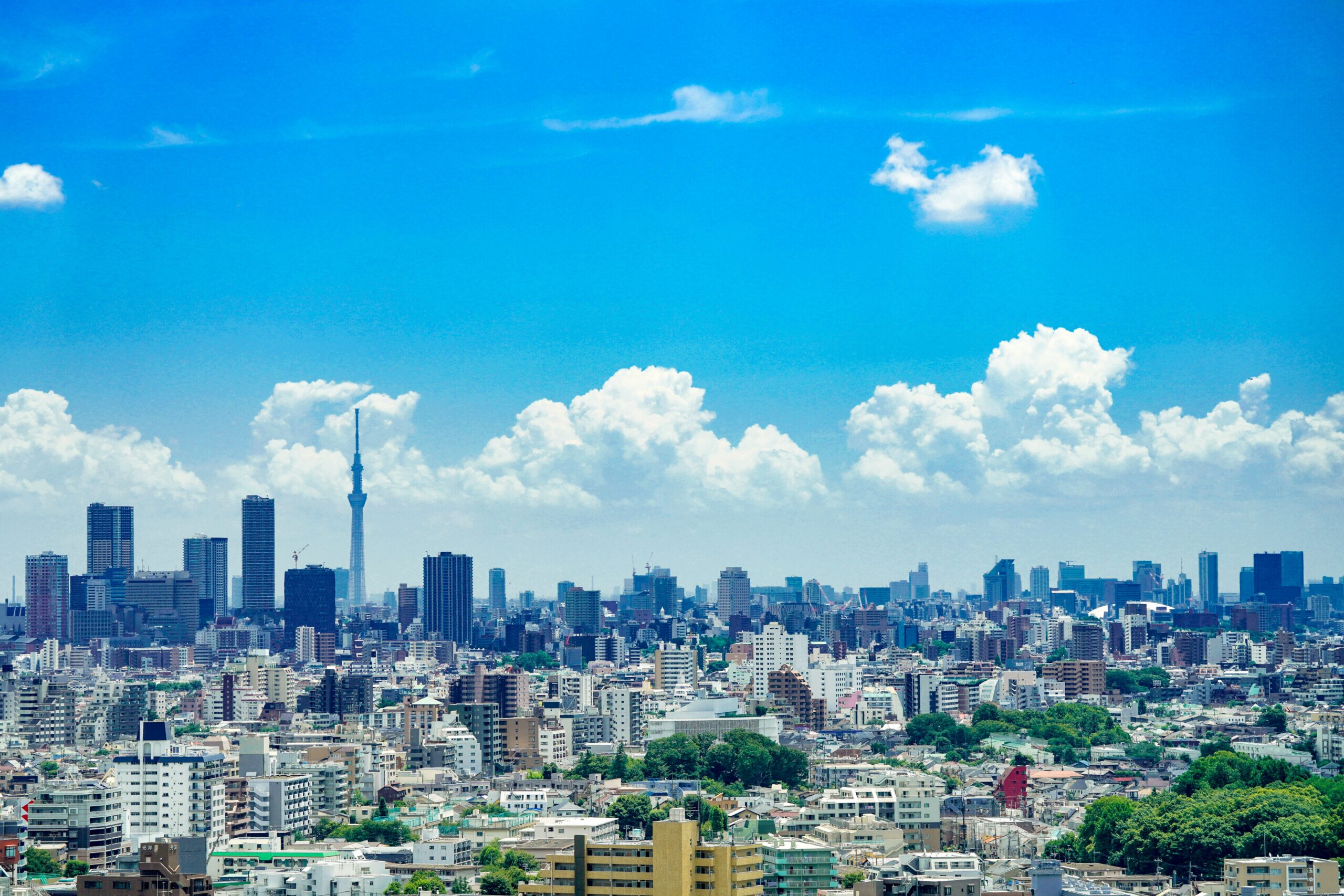
🍁 Autumn in Japan (September – November)
Autumn is the underrated star of Japan’s travel calendar. It doesn’t get quite the same international buzz as cherry blossom season, but for many locals and long-term residents, autumn is the best time of year to be in Japan — and for good reason.
The heat of summer finally fades, the skies become crisp and clear, and the air smells fresher. But what really makes autumn magical are the autumn leaves (kōyō / 紅葉) — a seasonal phenomenon that transforms the entire country into a kaleidoscope of fiery reds, deep golds, and glowing oranges. If spring is about soft pinks and renewal, then autumn is bold, elegant, and poetic.
Autumn in Japan might just be my favourite season of them all. The heat of summer finally breaks, the air becomes refreshingly crisp, and the entire country transforms into a glowing masterpiece of red, orange, and golden hues. If spring is for cherry blossoms, then autumn is for fiery leaves and peaceful strolls — and trust me, the atmosphere hits differently.
🍂 Weather & Seasonal Vibe
Autumn typically runs from September to November, and each month brings a noticeable shift. September still has some lingering summer heat, but by October the humidity fades, and by November it’s full-on jumper weather — but not too cold, just the right kind of chilly.
It’s the time when Japan feels calm but alive. You’ll see locals enjoying momijigari, which literally means “autumn leaf hunting” — it’s kind of like cherry blossom viewing in spring, but for autumn foliage. People go on hikes, visit temples, or just chill in the park to admire the stunning colours.
And personally? This is the time of year where I’d happily spend hours walking around Kyoto’s temples or wandering through mountain paths just to take in the view.
🍁 Where to See the Autumn Leaves
Autumn leaf viewing is a big deal in Japan. Temples, gardens, and mountains all become photo-worthy spots during this season — and each region has its own prime time for peak colours.
Some of the best places to experience kōyō (autumn leaves) include:
- Nikko (Tochigi): A UNESCO site packed with shrines and surrounded by forests that explode in colour — usually in late October.
- Kyoto: The temples of Arashiyama, Eikan-dō, and Tofuku-ji offer views that look straight out of a painting. Bonus points if there’s a bit of mist in the air.
- Hakone & Fuji Five Lakes: Autumn leaves with Mount Fuji in the background? Absolute dream material.
- Mount Takao (Tokyo): Just an hour away from central Tokyo, this mountain is popular with hikers during late autumn, and the foliage is unreal.
Even just walking around a local park like Yoyogi Park (Tokyo) or Nara Park (yep, the one with the deer!) can be a breathtaking experience.
🍠 Autumn Comfort Food
Autumn is when Japanese food becomes comforting, rich, and all about seasonal ingredients. It’s the time of year when even vending machines start offering hot drinks, and convenience stores roll out their autumn limited edition snacks and sweets.
Here’s what people go crazy for in autumn:
- Yakiimo (Roasted Sweet Potatoes): Sold from trucks or market stalls, these are crispy on the outside, soft and sweet on the inside — pure nostalgic bliss.
- Matsutake Mushrooms: These are the truffles of Japan, prized for their earthy flavour and only available during autumn.
- Sanma (Pacific Saury): A seasonal fish that’s grilled and served with grated daikon — simple but delicious.
- Kuri (Chestnuts) and Kabocha (Japanese Pumpkin): Used in everything from rice dishes to desserts, these flavours scream autumn.
It’s also the perfect season to indulge in nabe (Japanese hot pot) as the nights start getting cooler.
🍂 Autumn Events & Traditions
While autumn in Japan doesn’t have as many massive festivals as summer, there are still plenty of unique seasonal events that give you a taste of local life:
- Autumn Festivals: Temples and shrines across the country hold quieter, more traditional events — often with lanterns, ceremonial dances, and processions.
- Moon Viewing (Tsukimi): Held in mid-autumn, this is an elegant tradition where people appreciate the harvest moon, often with tsukimi dango (mochi rice balls) and green tea.
- School & Sports Festivals: If you’re living in Japan or even just visiting during this time, you might see students practicing for sports days, a really big deal in Japanese schools during the autumn season.
In short, autumn in Japan is the perfect blend of beauty, peace, and flavour. It’s ideal for travel, culture, and comfort food — basically a sensory treat from start to finish. You’ll fall in love with Japan a little more during this season, guaranteed.
🍂 Autumn Highlights:
- Kōyō Viewing (Autumn Leaf Hunting): Much like cherry blossom season, autumn leaf viewing is a national obsession. People track forecasts, plan weekend trips, and visit famous temples, shrines, and mountains known for their foliage. Some top spots include:
- Arashiyama (Kyoto): The Togetsukyo Bridge framed by golden trees is stunning.
- Nikko (Tochigi): Nature trails and waterfalls surrounded by brilliant leaves.
- Lake Kawaguchi (near Mt. Fuji): Autumn colours with Mt. Fuji in the background? Pure art.
- Daisetsuzan National Park (Hokkaido): The colours start here first — usually in mid-September!
- Perfect Weather: After the heavy humidity of summer, autumn in Japan is an absolute joy — cool mornings, sunny afternoons, and crisp evenings. It’s a perfect time for walking, hiking, and exploring without turning into a sweat puddle.
- Seasonal Foods: Japanese cuisine is very seasonal, and autumn brings its own delicious lineup:
- Kuri (Chestnuts), satsumaimo (sweet potatoes), matsutake mushrooms, and sanma (Pacific saury) are everywhere.
- Warm drinks and desserts start making a comeback. You’ll start seeing pumpkin flavours sneak into cafes and bakeries (even Japan has a version of pumpkin spice season, but it’s way more elegant).
- Cultural Events & Light Displays: While not as intense as summer, there are still events like autumn festivals, tea ceremonies, and even early illuminations in Tokyo and Osaka that start late November.
🎒 Pro Tips
- Best Kōyō Timing: Depends on where you are — Hokkaido peaks early (mid-Sept), central Japan around late Oct – early Nov, and southern Japan in late November.
- Book Early for Kyoto: Kyoto is basically autumn’s Instagram model. If you plan to go in late October or November, book hotels and trains early. It gets packed.
- Hiking Season: If you love nature, this is peak hiking season. Places like Kamikōchi, Mt. Takao, and Nara offer incredible views.
Personal Take:
Autumn in Japan is genuinely stunning. The way the sunlight hits the red and gold leaves, the smell of roasted chestnuts on a cool evening walk, and the peaceful vibe in the air — it’s got a calm intensity that just hits right. It’s one of those seasons that makes you want to slow down, explore little backstreets, or just chill in a park with some seasonal snacks and take it all in.
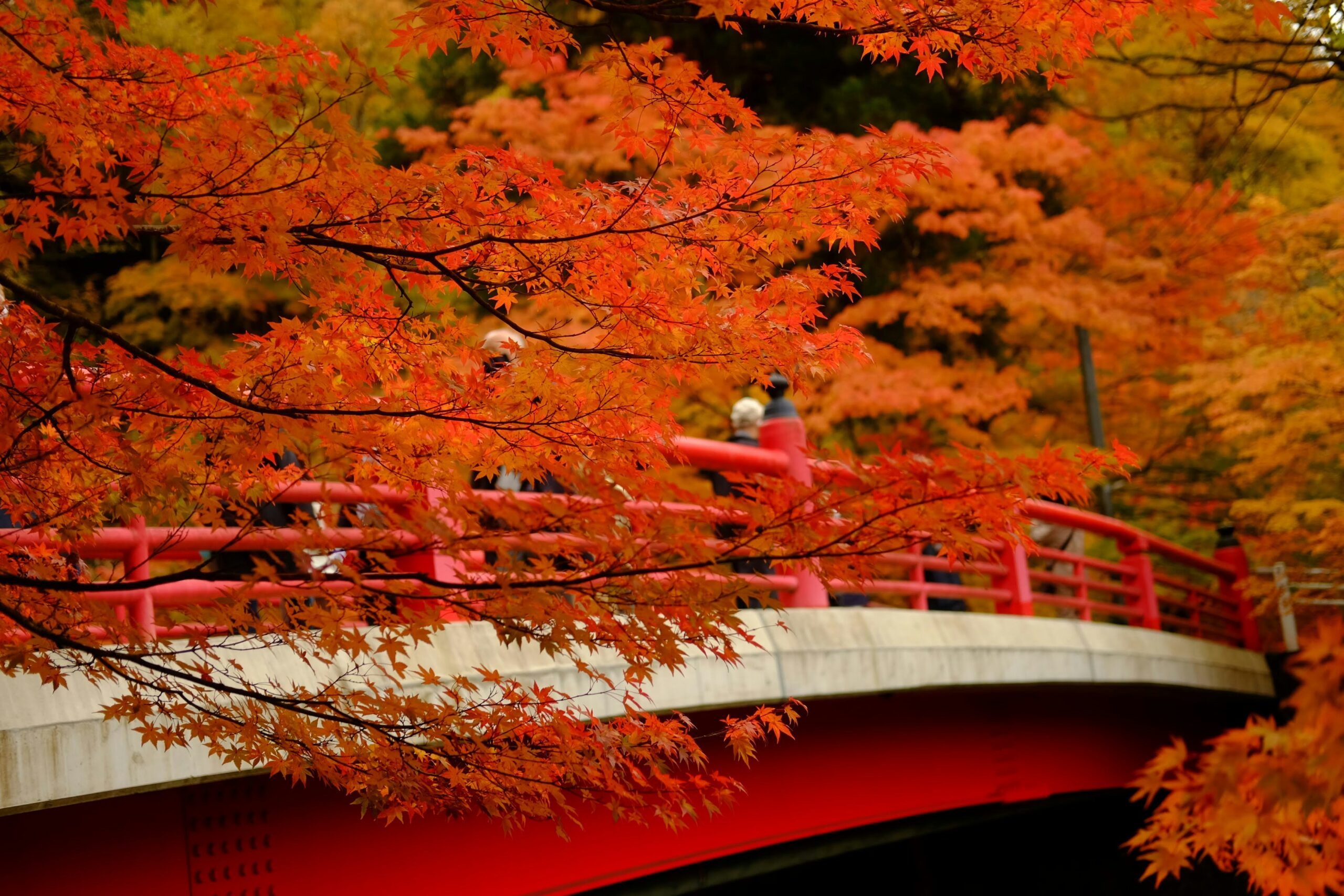
❄️ Winter in Japan (December – February)
Winter in Japan is seriously underrated — especially if you’re into snow-covered temples, hot springs (onsen) surrounded by mountains, festive illuminations, and steaming bowls of ramen after a chilly evening walk.
Japan isn’t just “a bit cold” in winter — it becomes a snowy wonderland, especially in the northern and mountainous regions. While places like Tokyo and Osaka might only get a dusting of snow, areas like Hokkaido, the Japanese Alps, and even parts of Kyoto can become magical winter destinations. If you’ve ever wanted to see temples covered in snow or bathe in an outdoor hot spring with flakes falling around you… this is the season.
🧊 Weather & Seasonal Vibe
Japanese winter runs from December to February, with the coldest months being January and February. The weather depends heavily on where you are — Tokyo and other central regions get chilly but relatively dry winters with lots of sunny days, while the north of Japan (like Hokkaido) is a full-on snow lover’s dream.
But regardless of where you go, winter in Japan tends to feel crisp, clean, and incredibly cozy. Locals bundle up in thick coats, convenience stores start selling hot drinks, and everything from train stations to family homes are warmed by kotatsu (heated tables) and nabe pots bubbling away.
Personally, I think winter is Japan’s most underrated season — fewer tourists, cheaper flights, and a chance to experience the country’s slower, more intimate side.
🏔 Best Places to Visit in Winter
Japan is blessed with stunning winter destinations, whether you’re into skiing, snow festivals, or just want to relax in a hot spring while snow falls around you.
Here are some iconic winter experiences you shouldn’t miss:
- Hokkaido: This is the ultimate winter destination. Cities like Sapporo, Niseko, and Otaru are covered in deep powder snow, perfect for skiing or snowboarding. Sapporo’s Snow Festival in February features massive snow sculptures that are honestly mind-blowing.
- Nagano & Niigata: These areas are famous for their onsen towns and ski resorts, many of which were used during the 1998 Winter Olympics. The town of Nozawa Onsen is a personal favourite — it’s traditional, atmospheric, and the perfect place to unwind after a day in the snow.
- Shirakawa-go: A UNESCO World Heritage village nestled in the mountains, famous for its thatched-roof houses blanketed in snow — it’s straight out of a fairy tale.
- Jigokudani Monkey Park (Nagano): Yes, this is the place with the snow monkeys bathing in hot springs. They’re wild, they’re adorable, and they’re surprisingly photogenic.
Even big cities like Tokyo, Kyoto, and Osaka get a touch of seasonal charm — think temples dusted with snow, romantic illumination displays, and seasonal New Year events that offer a beautiful cultural experience.
🍲 Winter Food & Traditions
Japanese cuisine truly shines during winter. It’s the season of comfort food, hearty meals, and hot drinks. You’ll find:
- Nabe (Hot Pot): A dish where everyone sits around the table and shares a simmering pot of broth filled with veggies, meat, and tofu — perfect for cold nights.
- Oden: A staple of Japanese winter convenience stores. This is a light soy-flavoured stew with ingredients like daikon, boiled eggs, konnyaku, and fish cakes.
- Yuzu (Japanese citrus): A winter flavour used in everything from bath products to sweets — there’s even a tradition of taking a yuzu bath during the winter solstice.
- Zenzai / Oshiruko: A warm, sweet red bean soup served with mochi. Not for everyone, but it’s very Japanese and very warming.
Winter also brings in major traditions like:
- Ōmisoka (New Year’s Eve) and Shōgatsu (New Year): The most important holiday in Japan. Families gather, eat traditional food called osechi ryori, and visit temples or shrines at midnight.
- Hatsumode: The first shrine visit of the year, where people go to pray for good fortune. It’s a peaceful but powerful cultural moment to witness (or take part in!).
🌟 Illumination Events
If there’s one thing Japan absolutely nails in winter — it’s illumination displays. Cities and attractions all over the country light up with LED masterpieces, turning otherwise normal streets into glowing fantasylands.
Some top picks:
- Nabana no Sato (Mie Prefecture): Arguably the most famous, with tunnel-shaped light shows, seasonal displays, and millions of lights.
- Tokyo Midtown and Shibuya’s Blue Cave: Urban areas transform into winter wonderlands with free light shows that attract crowds of excited locals and tourists alike.
- Kobe Luminarie: A grand, Italian-designed illumination event with a powerful backstory — created in memory of the 1995 Kobe earthquake.
Seriously — Japan doesn’t celebrate Christmas in the traditional Western sense, but they absolutely go all-out with lights, decorations, and romantic winter vibes. And yes — KFC and Christmas cake are a real thing here!
Winter in Japan is the season of stillness and sparkle. It may be cold, but it’s also heart-warming in every sense. If you don’t mind bundling up, you’ll get to experience some of Japan’s most beautiful landscapes, coziest food, and cultural traditions that stay with you long after you’ve left.
🏔️ Winter Highlights:
- World-Class Skiing & Snowboarding: Japan is home to some of the best powder snow on the planet. Resorts like:
- Niseko (Hokkaido)
- Hakuba (Nagano)
- Nozawa Onsen
- Zao Onsen (famous for the snow monsters or “juhyo”)
These are not just for pros — even beginners will find fantastic options, and the views? Unreal. Snowy forests, scenic mountains, and relaxing hot springs after a day on the slopes? Yes please.
- Onsen Season: There’s no better time to enjoy Japanese hot springs than in winter. Think:
- Sitting in an outdoor bath while snow falls around you
- Traditional ryokan stays with cozy futons and multi-course kaiseki dinners
- Famous onsen towns like Kusatsu, Yufuin, Kinosaki, and Noboribetsu
- Winter Illuminations: Japan takes winter light displays to a whole new level. Some of the biggest and best include:
- Nabana no Sato (Mie) – a dazzling flower and light park
- Tokyo Midtown & Roppongi Hills
- Kobe Luminarie – an emotional tribute event with Italian-style arches of light
- Seasonal Foods: Winter brings a whole new round of comfort food:
- Nabe (hot pot) in all its glorious variations — sukiyaki, shabu-shabu, kimchi nabe, yosenabe
- Oden – a warming dish sold everywhere from convenience stores to izakaya
- Yakiimo (roasted sweet potatoes) – sold by street vendors in trucks with speakers calling out “Iiiimo~o!”
- And of course… this is peak ramen season 🍜
- New Year (Oshōgatsu): New Year is Japan’s biggest holiday, and everything slows down for a few days. Most shops close, families gather, and people visit temples and shrines to pray for good fortune in the year ahead. If you’re in Japan during this time, it’s a unique cultural experience — but expect many places to be temporarily closed from Dec 31 – Jan 3.
🎒 Pro Tips
- Pack Layers: Japanese homes and buildings tend to be warm inside but cold outside, so dressing in layers is key.
- Book Ski Resorts Early: If you’re planning a trip to Hokkaido or Nagano, winter is peak time — make reservations well in advance.
- Get a Suica or IC Card: Perfect for hopping around the city when it’s too cold to walk long distances.
- Try a Kotatsu: These heated tables with blankets are common in Japanese homes — they’re life-changing in winter.
Personal Take:
Winter in Japan just feels cozy. It’s the time when you want to chill out, eat warm food, and explore areas that feel straight out of a Ghibli film after a snowfall. I haven’t even been skiing in Japan yet, but I already know I’ll love it — especially if it ends with a good soak in a hot spring followed by some yakiniku or ramen. Whether you’re chasing snow, culture, or just a relaxing break, winter in Japan delivers something special.
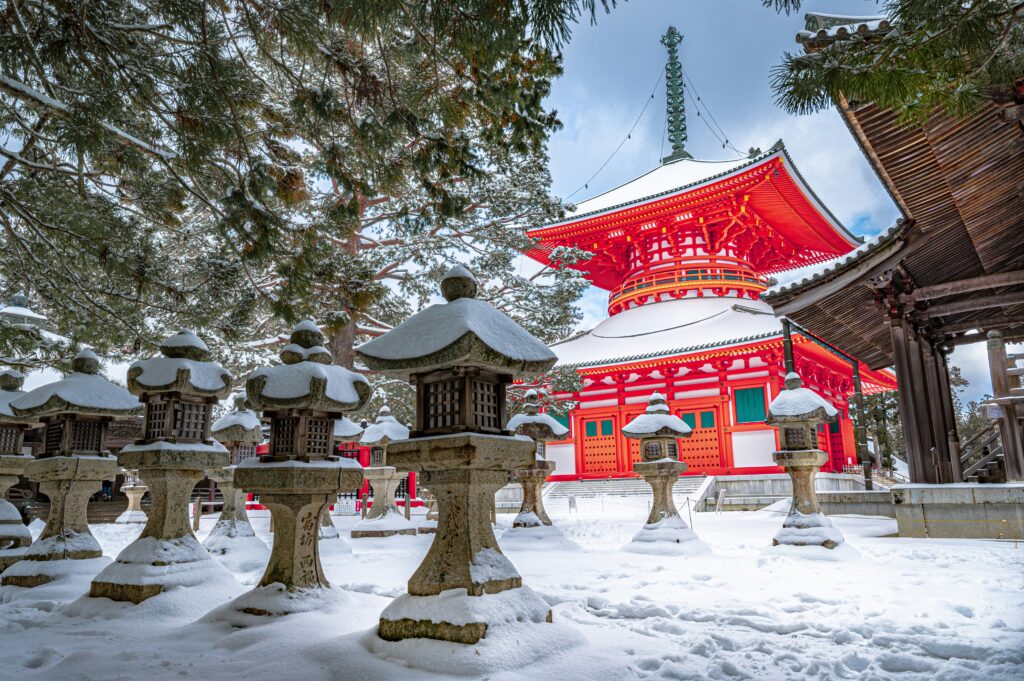
🏁 Final Thoughts
Japan is a country that truly transforms with the seasons — each one offering a completely different experience, vibe, and reason to visit. Whether you’re walking beneath a canopy of cherry blossoms in the spring, feeling the summer buzz of festivals and fireworks, soaking in the fiery colours of autumn leaves, or warming up with ramen after exploring snow-covered temples in winter — there’s something unforgettable waiting in every corner of the country.
The key is to travel intentionally. Think about what kind of experiences you’re looking for, what weather you’d prefer, and what cultural events you don’t want to miss. Planning your trip around the seasons means you’re not just visiting Japan — you’re experiencing it at its most alive.
If you’re serious about travelling to Japan, or even considering living here, understanding the rhythm of the seasons will help you connect with the culture, avoid major tourist traps, and create a much more personal and memorable journey.
Still unsure when to go? Don’t worry — we’ll be breaking down season-specific guides, regional travel tips, and local highlights in upcoming blogs, so stay tuned!
